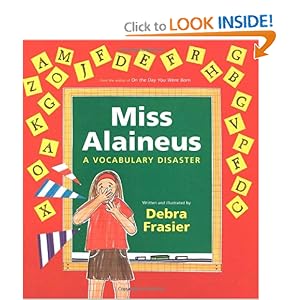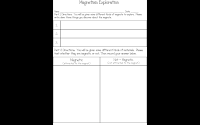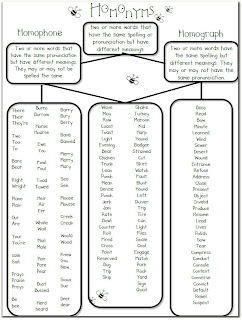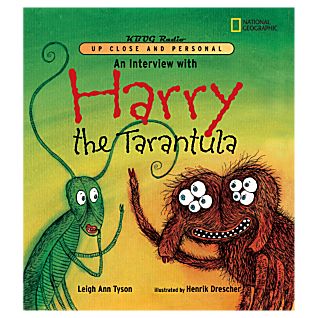This is my adaptation of Canda and Shar's "Tarzan Talk" typed up. Hopefully it will help any of you who wish to use it.
Tarzan Talk Lesson Plan
Tarzan Talk Video Clip
For the Good of All Students
Free Resources for Teachers. This is mainly 5th grade content, but of course, it can be modified. If you search through the blog, you will find posts on the subjects of science, social studies, language arts, and soon you should see more math. Feel free to use any items you find. If you like to modify and make things better, please share it back. This site is more like "teachers help teachers" instead of "teachers pay teachers".
Friday, June 29, 2018
Language Arts Reading
The Reading Process
A couple years ago Canda and Shar made a reading process chart to help teachers and students visualize the reading process.
My 5th grade team (Natalie, Britt, Mark and I) liked the idea, so we used the chart to create a bulletin board version. If you would like a copy of the master, to make your own CLICK HERE. The pictures below show our boards currently. They are held to the whiteboard by magnets, so you can easily remove parts as you talk about them.
Language Arts Fluency
Ideas on Teaching Fluency
Personal philosophies that have grown from this:
- Expression is so much more than just voice inflection. It can truly indicate comprehension as the students adjust their voice to show the mood/tone of the text.
- Accuracy matters most when our mistakes change the meaning of the text.
- Rate shows our ability to move through the text at a good pace...but speed loses meaning when it detracts from the expression.
- Smoothness shows that we can read in long meaningful phrases, heading punctuation. There is not much expression without smoothness.
CLICK HERE for the Fluency Rubric
Another great reading teacher (Bev) introduced me to the idea of having students use content-based reading passages to practice their fluency (and comprehension). This quickly became a regular practice. It takes one minute for a student to read a fluency passage to a partner. Another minute for their partner to give them feedback and a fluency score based on the rough running record that they took. Some benefits:
- Partner 1 is reading orally (eyes on text).
- Partner 2 is reading along and analyzing mistakes.
- Partner 1 gets specific feedback based on the rubric.
- Partner 2 practices giving feedback orally.
- 4 minutes of focused practice where everyone is engaged.
- Students are doing repeated reading of content material, reinforcing the curriculum.
You can copy and paste or write any content you want to use into Word. Make sure you have turned on the readability statistics. This will show you the number of words and will give you an idea of the reading level.
Teaching Fluency Mini-Lessons
Fluent readers are better at comprehending their reading. They do not constantly think about solving words and the meaning shines through. The most important part of reading is being able to understand it, so become a fluent reader so you do not miss meaning.
- Introduce the Acronym and the meaning of each:
- Expression = voices for characters, tone of voice that shows mood, inflection to support punctuation
- Accuracy = number of words correctly read
- Rate = speed, how fast or slow (this will change based on the setting, mood and characters but should never be so fast so that we can't understand or so slow that we become bored or confused)
- Smoothness = reading in long meaningful phrases, heading all punctuation
- As we focus on fluency, we will use a rubric to remind us what fluent reading should sound like and what it should not.
Foundation Strategy
- Read a story or passage with poor fluency. Ask the students to identify the problems. Next, fix the identified problems and try again. You will need model the importance of repeated practice continually.
- As you do this throughout your fluency lessons, help the students describe the problems more specifically, using the vocabulary on the rubric.
Guided Reading/Mini-lessons: Expression focus
- Introduce "Mood" - read a passage with good fluency but the total wrong mood and ask the students to identify what was wrong with your reading.
- Mood - (you can use the emotional wheel to help students describe moods) have students go through each page and decide the mood of the scenes and characters. Have them label these in the book with their sticky notes. In their small groups, have them do a few and then practice making their voice change with each page to reflect the mood. (The Rough Faced Girl is a good mood book that you can contrast)
- Mood - have students read various passages with a different emotion: happy, excited, mad, sad, in love, silly, serious, bored etc. Have them practice those different emotions both with you and then on their own. They will laugh and enjoy the lesson as they play with their voice. If students are feeling very shy about this, make sure you boldly model for them. If you can make them laugh or even laugh at yourself, you will lower the affective filter (maybe not enough for them to step out today, but definitely in the future).
- Mood - Show the kids one of the mash-up trailers for a children's movie. Demonstrating how if you change the music or mood you can take a well-known story and make seem very different. I like the Marry Poppins Scary Movie Trailer, you don't need to show all of it to give the kids the idea. If you think it is too scary, there are many other choices. Examples: Toy Story 3 Scary Trailer or What if Jaws was a Disney Movie.
- Mood - Facial Expressions: Explain how facial expressions are vital to expressing mood. Ask the students to watch your face as you read a picture book. Make sure you read expressively and exaggerate your facial expression. Ask what they notice (ignore the heat of your self-conscious facial capillaries as they blush from the many penetrating eyes). Next, tell your students to read a phrase (I usually choose one from a bulletin board around me). Ask the students to read it in a happy voice with a frown on their face. Have them try saying, "I am happy" with a frown on their face. Then repeat asking them to say, "I am sad" with a smile on their face. They will notice that you cannot make it really sound happy with a frown on your face and you really cannot sound sad with a smile on your face. They will giggle and think it is funny. Have them practice using facial expressions while they read. It will be uncomfortable for a while but let them know they will soon forget they are doing it; good readers do it naturally. Praise it when you see it.
- Mood: Action or drama - Good readers get into their story when reading aloud. They often use actions along with their facial expressions. Model this expressive reading then demonstrate a lack of expression. Finally, have student share the differences they noticed.
- Smoothness: model reading where you are stopping at the end of each line instead of with the punctuation. Ask the students to identify the problems. Talk about how much this changes the meaning of the text and how often it occurs. Model correctly after.
- Smoothness: a really fun activity to help students notice punctuation is to have them do actions or make sounds for each punctuation mark in a reading passage. Pause, sigh, or tap pencils once for a comma. Make a stop sign with your hand, tap twice, hop, or click your tongue twice at each period, question mark (you can shrug your shoulders here), or exclamation point. You can slide at hyphens etc.
- Smoothness: Have students work on their breathing while reading. Model being out of breath with a really long sentence. Show how punctuation helps us know when to breathe. Make sure you have some challenging sentences for them to practice with.
- Smoothness: Read the book 20 Odd Ducks. This shows how punctuation can completely change the meaning of the text. A fun extension we did was a class book where they had to write sentences about Earth Science, with different punctuation. They had to draw pictures to illustrate the various meanings.
Fluency and Character Ed in Five Minutes or Less
According to Utah Law (Utah Code Title 53A, Chapter 13, Section 109), we are supposed to teach character education in public schools. Described in 645 words, this law includes teaching about honesty, integrity, morality, civility, duty, honor, service, obedience to law, as well as respect, dignity and the idea of common good.
With an integrated curriculum, we can meet these needs in many ways. One affective way to integrate fluency is to do it through music (with lyrics). Why would you do this?
· More time with eyes on text (highly researched)
· Engaged students because they want to sing along and/or learn the lyrics
· Extra oral reading practice
· Sets the tone of the classroom and brings in more joy
· Comprehension skills are used to analyze/determine the meaning
· Character education issues are often addressed
We call this "Song of the Day" at my school. It is one of our students' favorite traditions and we have received extensive positive parent feedback from this. So, how does "Song of the Day" work?
· First, pick a song, find the lyrics and determine if it is appropriate and has a message about the topic you are addressing. CLICK HERE for a list of 114 possible songs.
· Next, you need to display the lyrics for the class - preferably using a projector.
· After that, you play the song and highlight the lyrics with your mouse as they proceed. I like to push their eyes ahead so I highlight a line ahead of where the lyrics are.
o The goal is to have the students read along, but if possible, we want them to sing along. (The best way to lower their affective filter and get them to sing with you is to start out by singing loudly yourself, even badly.... model that it is safe. - Dr. Waite @UVU)
· Finally, have students write what they think the message of the song was, share with their table and then have one from each table share with the class if time permits. They should adjust or add to their thoughts if someone said something they really liked or agreed with. Sometimes we allow students to submit songs. CLICK HERE for a Student SOD Submission
Sometimes I use the idea of song of the day to open up a topic, and every once in a while I go overboard and create something a little more special...
Using "Values" to Connect Social Studies and Writing
Language Arts Common Core Connection:
W.5.1. Write opinion pieces on topics or texts, supporting a point of view with reasons and information
- Provide logically ordered reasons that are supported by facts and details
W.5.2. Write informative/explanatory texts to examine a topic and convey ideas and information clearly.
- Develop the topic with facts, definitions, concrete details, quotations, or other information and examples related to the topic.
W.5.9. Draw evidence from literary or informational texts to support analysis, reflection, and research.
- Apply grade 5 Reading standards to literature (e.g., “Compare and contrast two or more characters, settings, or events in a story or a drama, drawing on specific details in the text [e.g., how characters interact]”).
- Apply grade 5 Reading standards to informational texts (e.g., “Explain how an author uses reasons and evidence to support particular points in a text, identifying which reasons and evidence support which point[s]”).
RL.5.2. Determine a theme of a story, drama, or poem from details in the text, including how characters in a story or drama respond to challenges or how the speaker in a poem reflects upon a topic; summarize the text.
RL.5.7. Analyze how visual and multimedia elements contribute to the meaning, tone, or beauty of a text (e.g., graphic novel, multimedia presentation of fiction, folktale, myth, poem).
RL.5.9. Compare and contrast stories in the same genre (e.g., mysteries and adventure stories) on their approaches to similar themes and topics.
RI.5.3. Explain the relationships or interactions between two or more individuals, events, ideas, or concepts in a historical, scientific, or technical text based on specific information in the text.
RI.5.6. Analyze multiple accounts of the same event or topic, noting important similarities and differences in the point of view they represent.
RI.5.8. Explain how an author uses reasons and evidence to support particular points in a text, identifying which reasons and evidence support which point(s).
Books:
Monday, January 21, 2013
Language Arts: Narrative Story Structure
1. Status Quo Lyrics to High School Musical Song Status Quo
2. Characters & Setting
3. Problem
4. Try/Fail Cycles or Blocks
5. Resolution
6. Ending
7. Theme
(Scenes are bing changes in place or time)
(Plot consists of several related scenes that move the character through the story structure)
2. Characters & Setting
3. Problem
4. Try/Fail Cycles or Blocks
5. Resolution
6. Ending
7. Theme
(Scenes are bing changes in place or time)
(Plot consists of several related scenes that move the character through the story structure)
Language Arts: Persuasive Writing
If you have used the ideas of "Explode the Moment" and the acronym "DRAPES" for writing, but feel they are a little redundant, you may like my take on it. It is called the PETS FRAME. It incorporates ideas from both.
Click HERE for a PDF version of the School Uniform PETS FRAME.
CLICK HERE for the PETS FRAME PDF
Here is an example of how to fill out the PETS FRAME using the topic of "School Uniforms" (written from the point of view that kids should be able to choose what they wear).Click HERE for a PDF version of the School Uniform PETS FRAME.
This is the Bing Bang Bongo Modified Click Here For PPT
Boring Template :-) PowerPoint
Use www.Timeforkids.com for some background articles to write about.
Science: Electricity and Magnetism

Electricity and Magnetism Cards

Magnetism Sciber Text
Electricity Sciber Text
Unit Opener: Magnet Exploration
For the PDF version of the Magnet Exploration CLICK HERE
Why can't we shock each other at school?
Sunday, January 20, 2013
Science: Earth Science
Click here for the Game Board you see below: Geologic Processes Game Board Modified
This gameboard is modified from the board on uen.org
If you want to use this board you will still need the cards which can be found by clicking HERE.
I had the kids make a T-Chart that was labeled:
1. Processes that build
2. Processes that break down
The students were expected to take notes as they played.
As a review activity, I made Earth Science "I Have, Who Has" cards. Click HERE for a copy of the cards.
I also made a quick review with some Earth Science Taboo Cards. Taboo Cards
This gameboard is modified from the board on uen.org
If you want to use this board you will still need the cards which can be found by clicking HERE.
I had the kids make a T-Chart that was labeled:
1. Processes that build
2. Processes that break down
The students were expected to take notes as they played.
As a review activity, I made Earth Science "I Have, Who Has" cards. Click HERE for a copy of the cards.
I also made a quick review with some Earth Science Taboo Cards. Taboo Cards
Wednesday, December 5, 2012
Language Arts: Word Relationships and Context Clues
Context Clues, Synonyms, Antonyms, Homographs
Common Core Standards:
L.5.5. Demonstrate understanding of figurative language, word relationships, and nuances in word meanings.
- Use the relationship between particular words (e.g., synonyms, antonyms, homographs) to better understand each of the words.
Enduring
Understanding: The relationships between words help me understand what I read
and improve my writing.
- What are synonyms, antonyms and homographs?
- How can word relationships such as synonyms and antonyms be used as context clues?
- How can I use word relationships to improve my writing?
Vocabulary:
- Synonym – two or more words with the same meaning.
- Antonym – two or more words with opposite meanings.
- Homograph – two or more words that share the same spelling (graph) mean different things and can be pronounced differently.
- Context Clues – Hints found within the text that help the reader understand tricky words or phrases.
 Synonym Antonym Homonym PDF
Synonym Antonym Homonym PDFHink Pink Game Board - Use Synonyms to Create Hink Pinks
Synonym Search Group Activity
Free Activities: Synonyms Antonyms Homographs Homophones
Free Activities: Context Clues
Context Clue Chart
Homonym Chart (Cute)
Synonym Antonym Homonym Game Board
Books:


Student Riddle Template for Eight Ate
Tuesday, November 6, 2012
Five Paragraph Essay
This is the Bing Bang Bongo Modified Click Here For PPT
Boring Template :-) PowerPoint
Use www.Timeforkids.com for some background articles to write about.
Boring Template :-) PowerPoint
Use www.Timeforkids.com for some background articles to write about.
Wednesday, September 19, 2012
Science: Matter
Matter Vocabulary Cards for Games
Matter Vocabulary Cards
Matter Vocabulary Notebook Template
Matter Sciber Text
Physical Property Lab Sheet
Students used this lab sheet while observing a set of 6 different clear substances: hand soap, acetone, vinegar, corn syrup, water, hydrogen peroxide.
Atom Quiz
This quiz was given about a week after my atom lesson. I use two giant marshmallows smashed together to represent the proton and neutron. A small marshmallow represents the electron. Students have to identify each part of the atom, their charges, where they are found and what the do. Example: They show me the proton and neutron are found in the nucleus of the atom. The proton has a positive charge (body language: thumbs up or plus sign. Analogy, it would be positive to be a pro-athlete). The neutron has a neutral or no charge (body langage: hands up showing that they want to stay out of it. Analogy, Switzerland or being stuck between two of your friends fighting). The electron has a negative charge and orbits the nucleus (body language: thumbs down for negative and circular motion for orbiting. Analogy: electron sounds like electrocute, which would be a negative experience).
Physical Property Specific Graphic Organizer with Density Cube Lab Instruction
The district has a kit with density cubes that is great to reinforce physical properties, observation, and data analysis. The link above is something I made to help scaffold what I wanted my students to do with the cubes.
Fake Snow Lab Sheet
If you use sodiumpolyacrylate, you can click the link above for a lab sheet to go with it.
Physical Change and Chemical Reaction Rotation Lab
This is a rotation lab, similar to the one done by Reaction Time (if you have Discovery Gateway come to present for your students). If you are not fortunate enough to have the presentation, you may want to add other rotations using the chemicals they use during the Reaction Time lab which include: cabbage juice, milk, and fertilizer. FYI: If you are wondering about the cute little animals and how they connect, they are simply there so the students have a visual to ensure they are recording the data in the correct spot on their lab sheet.
Sunday, September 16, 2012
Constitution Day
Today is a great day to analyze the Preamble!
Have the kids read the Preamble, watch the School House Rocks Preamble, highlight the difficult vocabulary words, match the vocabulary cards with their definitions, rewrite the Preamble with easier vocab, and finally discuss what the government is supposed to do for us, based on the words of the Preamble.
Preamble to the United States Constitution
Preamble Vocabulary Cards
Have the kids read the Preamble, watch the School House Rocks Preamble, highlight the difficult vocabulary words, match the vocabulary cards with their definitions, rewrite the Preamble with easier vocab, and finally discuss what the government is supposed to do for us, based on the words of the Preamble.
Preamble to the United States Constitution
Preamble Vocabulary Cards
Wednesday, June 6, 2012
Science: Heredity
This book "An Interview with Harry the Tarantula" is used to demonstrate a format for students to use after researching the traits of an animal. Use the author's craft to help students set up their writing. Use the graphic organizers below as templates for the activity.
Tiffany's Book Template
Erica's Book Template
Tiffany's Graphic Organizer for Gathering Animal Info
Tiffany's Book Template
Erica's Book Template
Tiffany's Graphic Organizer for Gathering Animal Info
The following template goes with a Explorer Article called "Weird and Wonderful" and a National Geographic Book called "Animal Adaptations". You can create the same scaffold with many texts on animals. Click here for the document.
Amazing Technology Resources
Technology Resource Presentation - This is a pdf from a powerpoint I made. It highlights things such as iTunesU, Wordle.net, Donorschoose.org, as well as many other amazing resources.
More Great Links:
Pinterest.com
Teacher Blogs and Teacher Created Materials
CLASSROOM TIMERS:
More Great Links:
Pinterest.com
Teacher Blogs and Teacher Created Materials
CLASSROOM TIMERS:
Tuesday, June 5, 2012
Language Arts: Vocabulary
Vocabulary
More to come, but here is a template... with the cute bees :-).
Vocabulary Journal Template
More to come, but here is a template... with the cute bees :-).
Vocabulary Journal Template
Subscribe to:
Posts (Atom)



























